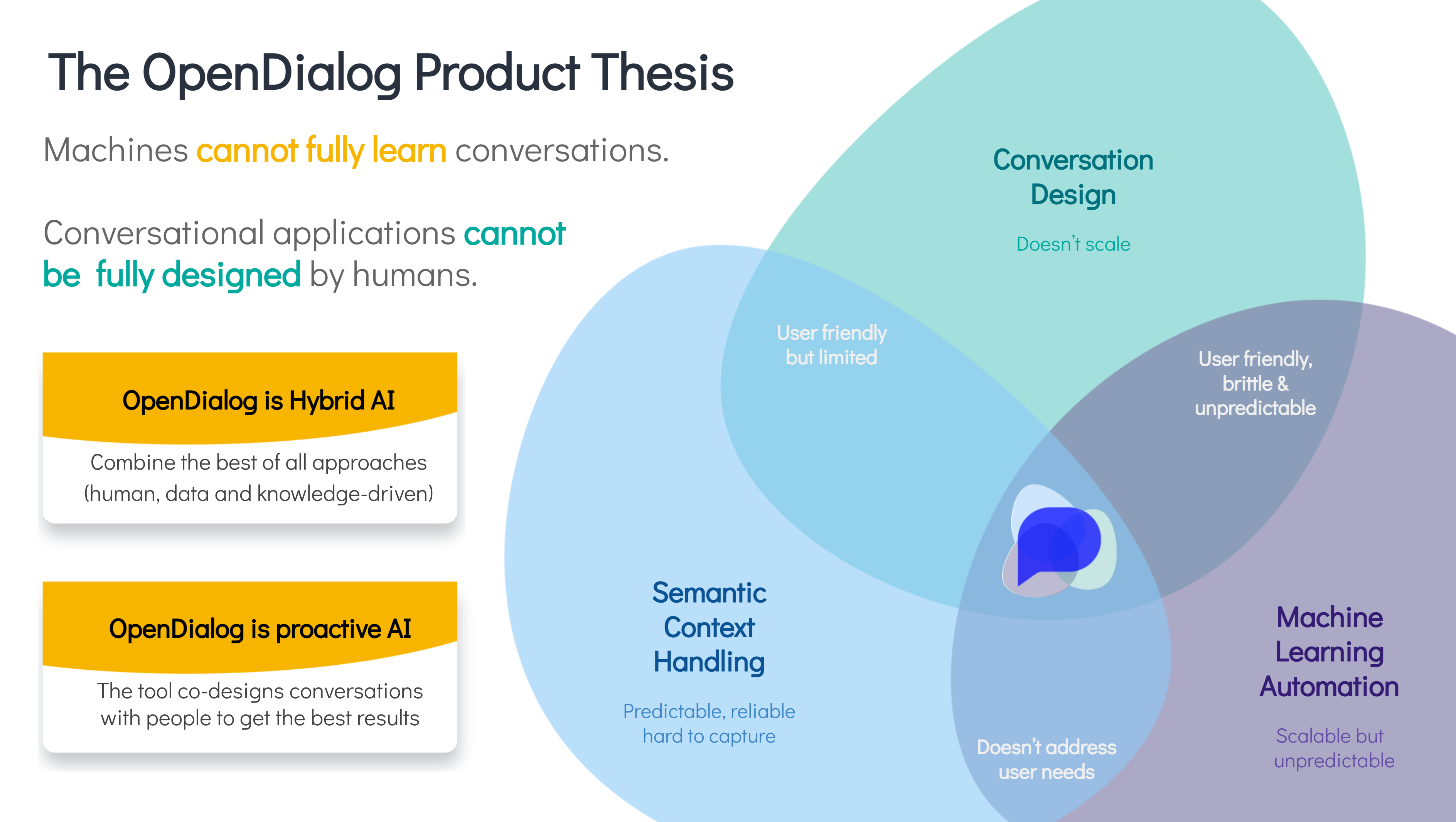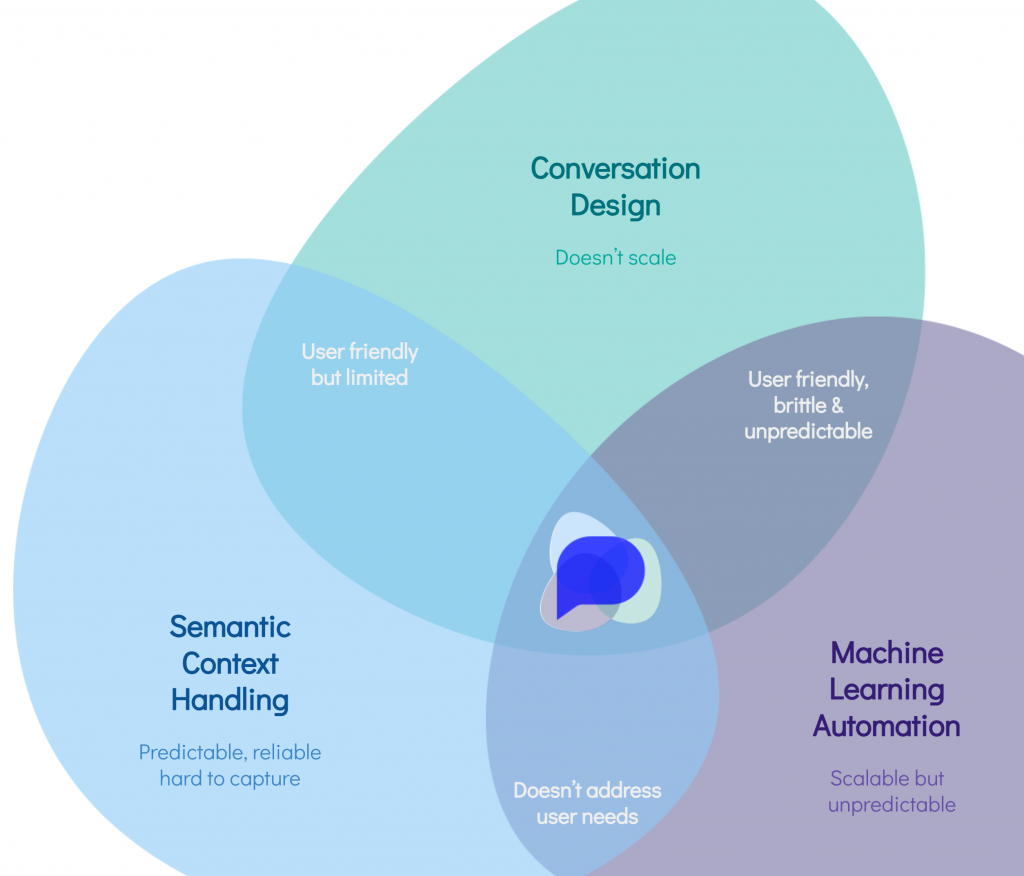When I was in university (and I am very much revealing my age here), artificial intelligence was not considered a “cool” thing. Far from it. There were no bachelor degrees in AI.
In my final year at Warwick University, I had taken so many AI-related courses, including cognitive sciences from the Psychology department, that I had to “sit down and have a chat” about whether my Computer Science degree was still a “proper” one. With help from my supervisor I luckily won that argument. My fascination with the subject was such that I went on to do a PhD in AI, focussing on a subfield called multi-agent systems. I enjoyed how multi-agent systems combined AI techniques, software engineering and inspiration from sociology to study how heterogeneous and autonomous systems could communicate, coordinate and collaborate to solve problems together.
After university, my attention went to knowledge management systems, Semantic Web technologies and web technologies more generally. My multi-agent systems days, I thought, were well and truly behind me.
The age of conversational applications
Fast-forward a few years. There was a new budding field of activity in the digital world. Chabots were becoming a thing. I loved how they could add a new tool to the arsenal of digital experience builders and how they turned the tables on human-computer interaction. When we point and click (or zoom and pinch) we have to figure out how the machine works. When we talk though, it’s the machine that needs to figure out what we need.
When we point and click (or zoom and pinch) we have to figure out how the machine works. When we talk though, it's the machine that needs to figure out what we need.
We ended up founding GreenShoot Labs to explore the conversational application space. After a couple of years of building solutions for a range of organisations from consumer-facing brands, to government and large enterprises, we are more convinced than ever that conversational applications will transform how we interact with organisations and each other. Humanity has big challenging problems to solve and better automation through conversation is part of that solution. It is how we make it easier for people to access government services, scale education, build better health services and so much more.
From a tooling perspective, though, we felt that things were not quite where they could be. I was surprised that all the effort was almost exclusively on the natural language processing side of things. Forgive the pun, but there was not a lot of conversation about what conversations are. Where was a definition of a conversational model? Where was mention of all the work around interaction done in multi-agent systems research? A bot (or bots) talking with a human is exactly the sort of problem we’ve been working on.
There was not a lot of conversation about what conversations are.
Machine learning on its own or decision diagrams are not enough. We need tools that combine a number of different approaches and tie it all together. More importantly, we need tools that enable any organization to design, develop, deploy and maintain useful conversational applications at scale. So we set about building one.
The birth of OpenDialog
OpenDialog is unlike any other conversational tool out there. Yes, I fully acknowledge that that is a comment everyone likes to make about their own tool and ideas and I do not make it lightly.
Here are the reasons why OpenDialog’s approach is different from the other (very exciting and very interesting) work happening already in the conversational space.
- Our starting point is a deep and detailed definition of what represents a conversational application. It draws from research from within the multi-agent systems space - a concept called Electronic Institutions. I won’t go into the details here but this gives us a semantic scaffolding for the framework that allows us to design and define conversations, mixing and matching a variety of different conversational approaches and patterns (guided, open-ended and everything in-between) It also allows us to build software that can reason about conversational state in a more effective way making for more resilient conversations.
- Our long years in the trenches building large scale digital platforms, and especially enterprise-scale content management systems make us fully aware that the challenge for organizations is not just to build one effective bot. Rather it is to scale that to dozens, even hundreds of conversational applications and do it reliably time and time again. OpenDialog is designed from the ground up to deal with those challenges.
- When it comes to building automated decision-making systems such as conversational applications, no single approach or technique is enough. You need great conversational design, the judicious and appropriate use of the right machine-learning and natural language understanding techniques for the job at hand coupled with context-specific and domain-specific knowledge management. OpenDialog sits at the intersection of these three areas and allows users to build solutions that combine the best of each.

Although we have been exploring these ideas for the past two years, we are only just at the start of this journey. From better customer service across any channel to applications that help people better manage their health, learn new skills and collaborate more effectively; conversational applications have the potential to make the digital world more accessible and more useful for all, at scale.
We want OpenDialog to be the tool that makes it possible for your organisation to fully exploit the benefits of conversational applications and are looking forward to talking with you about how we can help you achieve that!



